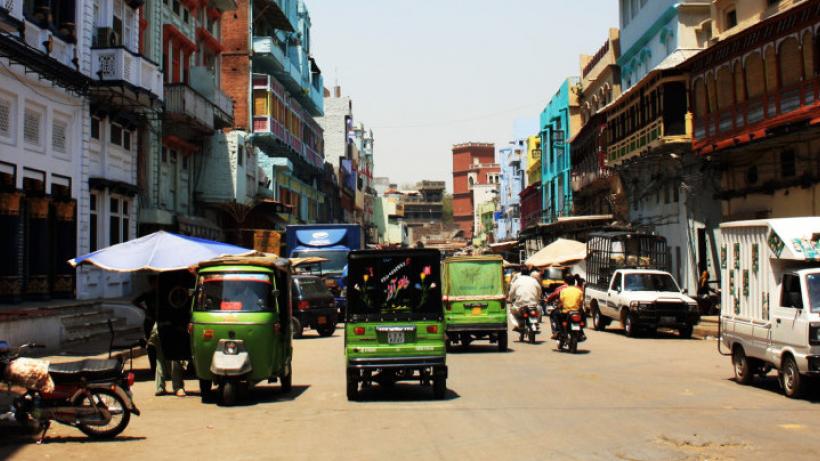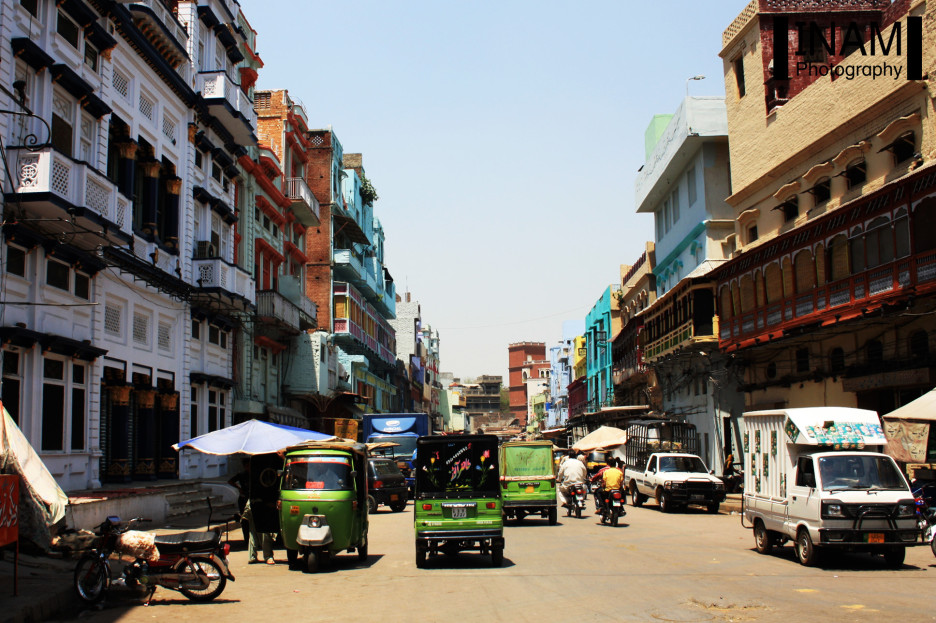
Four ideas changing how the Punjab government thinks about development
Growing interest and attention for evidenced based policy has begun drawing more researchers to Pakistan. Here are four of the most promising research ideas, presented at the recent IGC-CDPR conference in Lahore, Pakistan.
During the 80s and 90s, development research in Pakistan took a turn for the worse. Although there were always interesting research questions on how to improve Pakistani society – pertaining to governance, education, urbanisation and taxation to name a few – academic work on these topics was not getting the attention of policymakers who could make a difference. Nor was it sufficiently contributing to the field of development, as most studies from Pakistan were not published in leading academic journals.
It is no surprise then that researchers were overjoyed to declare at a conference in Lahore that Pakistan is now moving in the right direction. Renowned international academics are again involved in Pakistan and many government officials are taking a more active interest in using cutting-edge research and strong evidence for designing policy.
However, there is still much to be done. Policymakers must do more to incorporate new research into the implementation process so that the changes can be felt on the ground. But the fact that key implementers are now listening is noteworthy.
The conference, funded by International Growth Centre and co-hosted by the Consortium for Development Policy Research and the government of Punjab, presented four high-impact projects researchers are working on in collaboration with the Punjab government under the theme of “Enhancing State Capabilities”.
Later, researchers at the seminar held an audience with Chief Minister Shahbaz Sharif himself. Sharif received their presentations with great enthusiasm and is now forming committees to incorporate their ideas into the implementation process.
Here are the four ideas being tested in Punjab:
Safe, reliable public transport for women could mean more women in public life
According to the 2007 Pakistan Demographic and Health Survey, only 19% of women in urban Punjab work, yet another 26% want to work. 57% of women said that they either do not want to work outside the home, or their husbands forbid them. Fear of women leaving home is explained in part by the fact that travelling to work can be very uncomfortable for women. A 2014 survey by the Asian Development Bank found that 85% of working women in Karachi reported being harassed in the past year.
Duke University postdoctoral associate Katherine Vyborny interviewed women in Lahore for her ongoing research (in collaboration with Erica Field of Duke University and Ghulam Abbas of UET, working with a team of researchers at CERP including Fizzah Sajjad, Syed Uzair Junaid, Alieha Shahid and Faizaan Qayyum), and found preliminary evidence suggesting that their decision to work was based in part on whether they could find safe, harassment-free transport. This often comes in the form of workplace pick-and-drops, a transport service employers use to attract job candidates, especially women.

Gawalmandi, iconic town located in central Lahore.
Image credit: Inam Photography
The researchers think that greater access to safe, reliable transport could lead to considerably higher employment for women. This would lead to a better quality pool of workers for employers, who might lose the best qualified candidate for the job when women are unwilling or unable to make the commute.
One challenge with pick-and-drops is that they can be inefficient for a small employer that has only a few women workers in scattered areas of the city. So the researchers worked with a transport operator to devise a scheme for a pilot pick-and-drop that groups small employers together, making pick-and-drop an option for more workers and employers.
After testing a women's-only pick-and-drop and a mixed-gender pick-and-drop in randomly selected treatment areas for a year, the researchers will evaluate the impact of these two options in helping women (and men) access jobs, and compare them to each other and to existing forms of transport. If the pilot is successful, they anticipate that it could become financially sustainable in some areas; in marginalised areas, it could be subsidised to help improve equal access to employment.
Education: Can the public and private sectors work together?
Schooling is typically thought of as private or public. But what if we could create successful schools in Pakistan that are private and public? This is precisely the question Faisal Bari, the director of the Institute of Development and Economic Alternatives (IDEAS) and Rabea Malik, a research fellow at IDEAS, looked at in their assessment of public-private partnerships in Punjab and Sindh.
There are two ways the private and public sector can work together in education. Either the state can finance low-fee private schools, or private actors can offer infrastructural and managerial solutions to public schools.
public-private partnerships in education are not only important for reforming Pakistan’s underperforming public schools, but they also build state capacity
Bari and Malik conducted a survey that compared schools with and without partnerships, and found that partnered schools increased both net and female enrollment at a higher rate from 2009 to 2013. Partnered school facilities scored higher in their infrastructure index, which measured available electricity, drinking water, boundary walls, main gates, playgrounds and libraries. Students at partnered schools also achieved better learning outcomes.
In Sindh, head teachers reported feeling more supported in partnered schools, and a higher percentage of them were using best practices in pedagogy.
Bari and Malik concluded that public-private partnerships in education are not only important for reforming Pakistan’s underperforming public schools, but they also build state capacity. The next step in their research is to answer the policy question: could private-public partnerships be designed as part of an agenda to strengthen government institutions?
Digitising public procurement leads to better use of government resources
In the process of public procurement, the Punjab government buys goods from the private sector to deliver public services. The comprehensive development agenda, outlined in the Punjab Growth Strategy 2018, found that current procurement practices still rely heavily on manual, paper transactions that create delays and incentivise wasteful, often corrupt transactions.
higher returns at lower cost can be achieved through a digitised procurement tracking system
Dr. Adnan Khan, Research Programme Director of the International Growth Centre and Programme Director for the Center for Economic Research in Pakistan, presented evidence of substantially different prices being paid for the same goods and services purchased by the government and posited that the inefficiencies of the procurement system have resulted in demotivated government employees who are constrained by restrictive rules and sluggish auditing procedures.
Khan demonstrates that higher returns at lower cost can be achieved through a digitised procurement tracking system. Already, thousands of government employees use the Punjab Online Procurement System (POPS), which gathers data on procurement spending, rewards officials by ranking transactions for their value for money, and provides an accessible, centralised interface for managing procurement transactions. Widespread adoption of this system, which Khan and researchers Oriana Bandiera (London School of Economics), Michael Best (Stanford University) and Andrea Prat (Columbia University), will track for an upcoming research project, would result in a faster process and minimise wasteful spending.
Incentives for tax collectors yield larger budgets for public spending
If Punjab is to achieve its ambitious growth strategy, it’s going to need a bigger budget. Low public revenues are attributable, in part, to low-motivation by government employees to collect taxes for the government treasury, and disenfranchised citizens who do not see the benefits of paying them. Consequently, taxes collected in Punjab are 10-20% of potential tax revenues that could be collected.
Benjamin Olken, Professor of Economics at the Massachusetts Institute of Technology, conducted a study with Adnan Khan and Asim Khwaja (Harvard University) that observed the effects of introducing pay-for-performance incentives to tax collectors employed by the Punjab government. Three different schemes that rewarded bonuses proportional to taxes collected were compared to a group that received a fixed salary.
The result: bonuses did improve performance. Revenues from all three schemes grew by at least 13%, relative to the control. The most effective incentive was a bonus proportional to taxes collected, which lead to a 46% growth in revenue. The increased revenues exceeded bonus payments to employees, making pay-for-performance a cost-effective solution.
Another way to improve revenue is to use geographic postings to motivate tax collectors. Currently, postings are based largely on political connections. Olken and his team devised a Merit-Based Transfer and Posting scheme, which identifies the best performers, allowing them to choose preferred post transfers. Although the results of the scheme have not been finalised, the team hopes that it will lead to better overall performance at zero cost for the government.
Moving forward, Olken’s team will assess whether the need to meet taxpayers’ preferences adds another incentive for tax collectors to deliver. All taxpayers will receive along with their tax forms an information sheet that says exactly the services being funded by their taxes. Taxpayers will also be asked to fill out a survey asking them which services they want to see improved. The survey results will then be shared with the local government.

